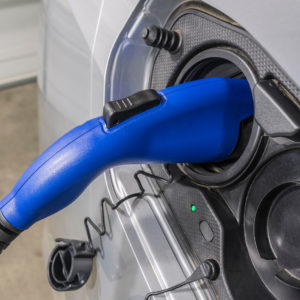When The Boston Globe reported on the need for Massachusetts to “dramatically increase the number of public electric vehicle (EV) charging stations” to meet its goal of “nearly one million electric vehicles” by 2030, the newspaper left out one minor detail.
How many EVs are on Bay State roads right now?
Was it an editorial oversight? Or did the number get overlooked because it’s so small?
According to the U.S. Department of Energy, out of the more than 5.42 million registered vehicles in Massachusetts at the end of 2022, just 49,440 were EVs. That is a minuscule 0.91 percent of the cars on Bay State roads.
Similarly, in New Hampshire, where state House Democrats have pushed for more public spending on EV infrastructure, fewer than 7,000 of the state’s 1.37 million registered vehicles are EVs. That’s just 0.51 percent.
Statistically speaking, nobody in New England drives electric vehicles. But elected politicians have backed billions in tax dollars to subsidize them.
Further evidence of that can be seen in how many Granite Staters still drive gas-powered vehicles. In 2022, nearly 86 percent (1.18 million) of all registered vehicles in the state were gas-powered.
But climate groups and national and state Democrats continue to push for green spending, as well as subsidies for the production and purchase of EVs, even as “they’re languishing at dealerships twice as long as gasoline-powered cars,” according to Politico and Cox Automotive.
Consider the Inflation Reduction Act (IRA) passed one year ago with the votes of all four Democrats in New Hampshire’s federal delegation. President Joe Biden has since expressed his regret for putting “inflation” in the bill’s name, saying its real mission was a massive investment in green spending. According to The Wall Street Journal and a Goldman Sachs report, at the heart of the act were green subsidies and tax credits, including credits for manufacturing and purchasing EVs, that will cost $1.2 trillion.
On top of that, the administration has spent $2.8 billion subsidizing the construction of lithium-ion battery cells for electric vehicles and another $7.5 billion to fund EV charging stations across the country.
But while taxpayer spending can spur the domestic production of EVs and their lithium-ion batteries, can it create demand for EVs among everyday Granite Staters? So far, it looks like an uphill climb.
Democratic Sens. Jeanne Shaheen and Maggie Hassan, as well as Democratic Reps. Ann Kuster and Chris Pappas, all voted for the IRA and its green spending but none responded to requests for comment on the lack of demand for EVs.
The New Hampshire chapter of the Sierra Club and 350NH Action, two environmental groups who have aggressively advocated for the Biden administration’s green energy policies, also refused to answer any questions about the lack of consumer interest in EVs.
It does not help that there are serious safety concerns with EVs. Apparently, EVs present such a risk that fire departments are offering special “Electric Vehicle and Lithium-Ion Battery Fire Classes” to teach what to do if the vehicles ignite, even as the Biden administration and Democrats insist on subsidizing them.
Compounding the issue further, a report by the Manhattan Institute found those subsidies are both misguided and based on flawed assumptions.
While demand isn’t there yet, “The future will see tens of millions more EVs on the roads, even without government programs that favor or mandate them,” the report said. “But the entire edifice of subsidies, prohibitions, and regulations to move most, if not all, citizens from ICE [internal combustion engine] cars into EVs is based on a profoundly weak—or, in some cases, false—foundation of claims about emissions reductions and economic parity.”
Those claims? 1. “No one knows how much, if at all, CO2 emissions will decline as EV use rises,” and 2. “No one knows when or whether EVs will reach economic parity with the cars that most people drive.”
It certainly hasn’t happened yet. Surging electricity costs in New Hampshire, coupled with higher EV list prices — “which can cost at least $10,000 more than the equivalent gas-powered car,” according to CBS News — mean gas-powered cars overall are still more affordable than EVs despite high gas prices.
In fact, an analysis by Cox Automotive found the average list price of new vehicles in June was just north of $47,000.
The average list price of EVs alone that month? $63,486.
And on the production side, it’s unclear if tax credits will even make EVs profitable to produce. “Goldman estimates the tax credit could shave the cost of battery production by 35% to 42%, though EVs would still cost 17% more than vehicles with internal combustion engines,” The Wall Street Journal reported. “While tax credits will improve automaker EV margins, it’s not clear whether they will make EVs profitable.”
But even if the subsidies and tax credits accomplished their goals and every Granite Stater transitioned from a gas-powered vehicle to an EV, New Hampshire would still be nowhere near zero carbon emissions.
More than 40 percent of New Hampshire households burn oil as their primary source of heat — the second-highest proportion in the country and 10 times the national average.




